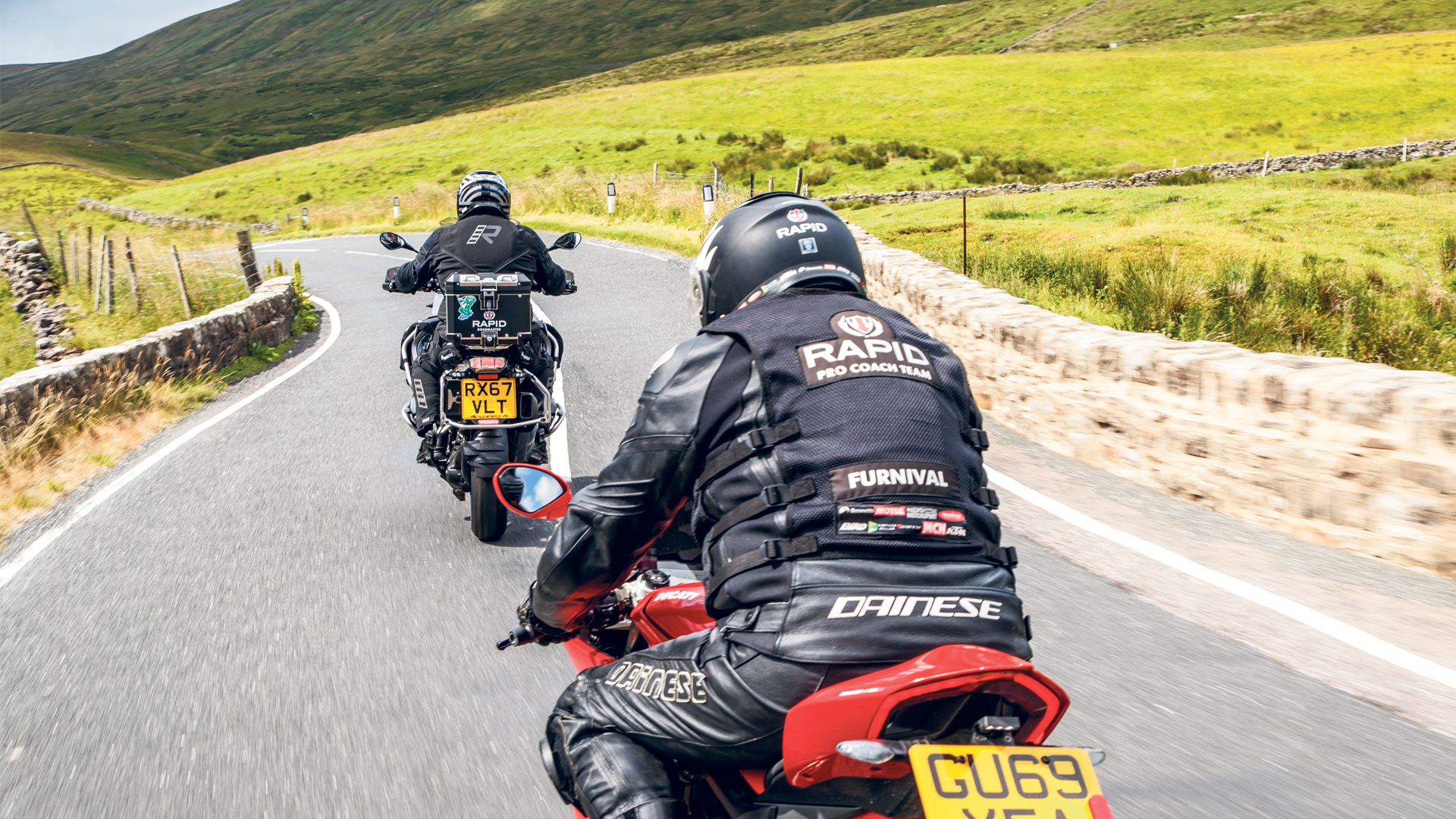
Gears & speed
Set your speed and gears – perfectly!
Get this perfect, and every corner will be a riot of smooth enjoyment
A plan is vital for tackling every hazard we encounter on the road, and should include intended road position, approach speed and gear, turning point, and finally acceleration on exit. Your speed into a corner should be defined by what you can see, the severity of the bend, your chosen line, and the road surface. In almost every situation it is better to enter a corner slowly. Reduce speed using the front brake prior to turning the bike and corner with a closed throttle, this will help the bike corner better.
With your speed set, aim to stay out as wide as is safe and pick a late turning point. At the point of turn, turn your whole head towards the corner exit – and beyond, if you can. Using this tactic will not only give you advanced information about what’s ahead, but will also act as a tractor beam to pull you smoothly around the last part of the corner.
Take advantage of all the available information to determine the severity of a bend. Road furniture and signage may give advance warning but features such as telegraph poles and trees are a better indicator of how tight the turn is likely to be. Look for the roofs of oncoming vehicles across hedgerows, too.
Most people comfort brake because they’re in too high a gear and when they roll off the throttle the motorcycle just carries on as a result. Dropping it ‘down a cog’ will increase revs and make your bike’s motor more responsive to your throttle inputs, thus increasing the effect of engine braking when you get off the gas.
This is the key to smooth cornering. Get the gear right on entry and you’ll have much better control through the course of the bend, making the machine feel more stable as you wind on the throttle towards the exit. The more you work on your cornering, the smoother and more confident you’ll become.
Any braking destabilises a bike and can become serious when cornering, particularly in the wet. With the right technique you should be able to ride twisty roads on throttle control alone – and a big part of that is being in the correct gear. As a rough guide you want your engine speed at 50% of the rev range. That should give you enough engine braking when you roll the throttle off and, for most bends, you’ll be in the right gear for the exit drive, too.
QUICK TIPS
Gather all the info
Throw your vision as far forward as possible to assess the upcoming corner, using things like road curvature, the speed of oncoming vehicles, warning signs and surface. Keep scanning the road ahead at all times.
Slow progress
Don’t worry to begin with if you end up going into the bend too slowly, it’ll help build your confidence about staying off the brakes. With experience you’ll be able to gauge your speed more accurately.
Gear down
Start to move your bike into position for entry into the corner and change down through the gears progressively to use engine braking to slow the bike down while at the same time keeping the revs up.
Improved control
Another advantage of being on a positive throttle as you turn into a bend is that you can then use it to slow down further should an unexpected hazard appear midway through the corner. With extra speed scrubbed off before you turn in and the bike in the right gear you’ll be able to maintain a positive throttle throughout the bend. This stabilises the bike and allows for a more accurate line.
No need to change
For most bends the correct gear for the entry to the corner will be the same one for the exit, so all you need do is wind on the throttle as the bend opens up.


